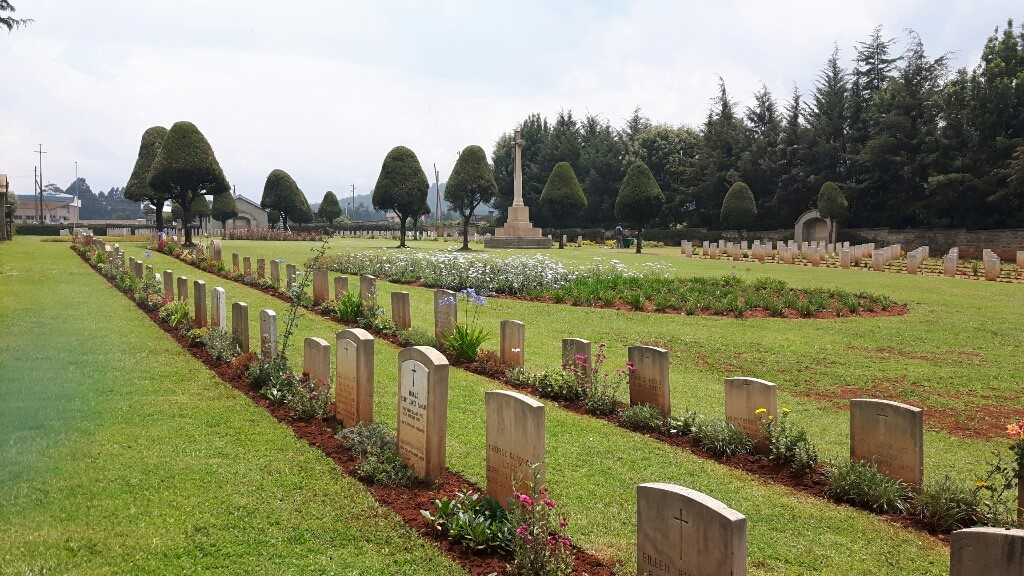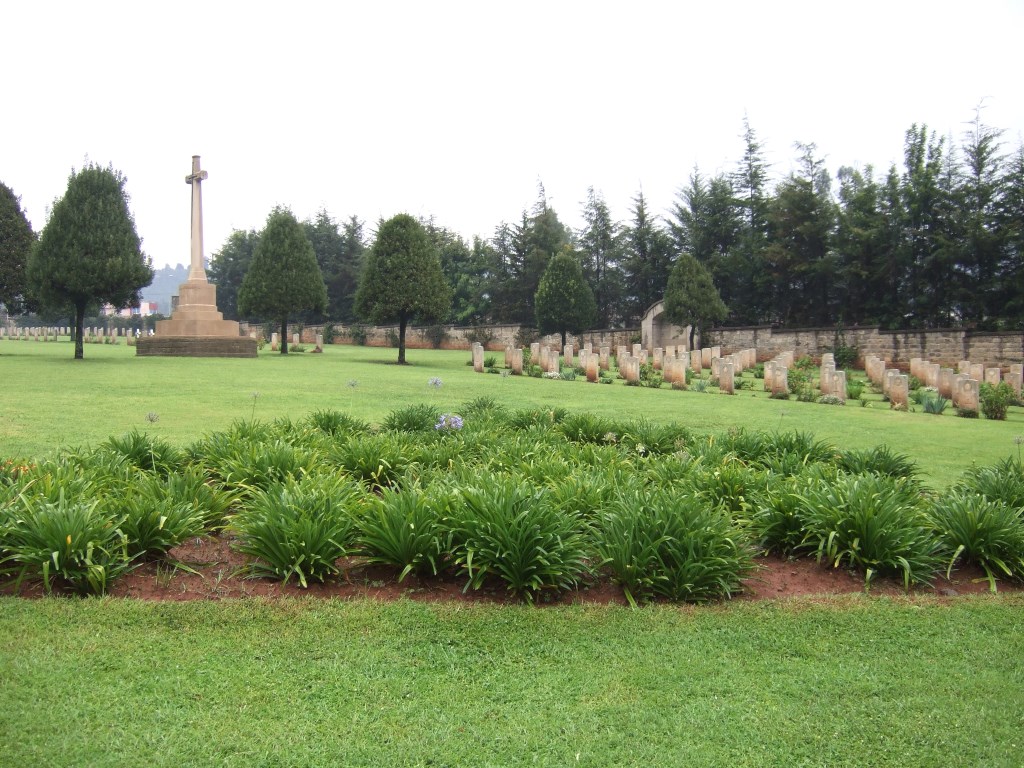Addis Ababa War Cemetery
- Country Ethiopia
- Total identified casualties 289 Find these casualties
- Identified casualties from Second World War
- GPS Coordinates Latitude: 9.05731, Longitude: 38.71566
Please note
There may be chameleons present in the Cemetery. Please take care not to touch them, as they have a tendency to bite if they feel threatened.
Location information
Addis Abbaba War Cemetery is approximately 9 kilometres from the city centre on Ambo Road, the main road to western Ethiopia, opposite the General Wingate School.
Visiting information
ARRIVAL
The route to the cemetery is signposted.
PARKING
It is possible to park outside the main entrance of the cemetery. The ground is a mixed surface of grass and gravel but is firm and flat.
There is enough space for up to 5 vehicles to park.
The parking area is approximately 5 metres from the main entrance.
ACCESS, LAYOUT AND MAIN ENTRANCE
There is a large metal double gate which is kept open when the cemetery is open. There is a step down from the entrance into the cemetery, which is rectangular shaped, and has a moderate slope along the length of the cemetery.
The Register Box is on the left-hand side of the main entrance built into the main gate pillar.
The Cross of Sacrifice is in the centre of the cemetery burial area, slightly to the right of the main entrance.
There are 2 large arched shelters in the cemetery, both have stone bench seating areas built into the back wall of the arch.
ALTERNATIVE ACCESS
There are no alternative entrances or access into the cemetery.
ADDITIONAL INFORMATION
The cemetery is open;
Monday to Thursday 0800 hrs to 1700 hrs
Friday and Saturday 0800 hrs to 1630 hrs.
History information
When Italy entered the war in June 1940, Ethiopia, which had been part of the Italian East African empire since 1936, became a threat to British positions in Egypt and the link by sea to the Far East and Australasia.
Commonwealth forces took up defensive positions on Ethiopia's borders with Sudan to the west and Kenya to the south, and in mid-December 1940, after initial skirmishes with the Italians, the first of a series of offensives was launched from Kenya. A strike east into Italian Somaliland secured the coastal port of Mogadishu in February 1941 which made possible an advance into the heart of Ethiopia. Within a month Harar had been taken and Addis Ababa, the Ethiopian capital, was captured early in April, allowing the deposed Emperor Heile Selassie to return in May.
Diminished Italian forces continued to withdraw north and the East African campaign in Ethiopia was not concluded until the end of November 1941 with the surrender of the last concentration of Italian forces at Gondar.
Addis Ababa War Cemetery contains 294 Commonwealth burials of the Second World War, seven of which are unidentified. The cemetery also contains the graves of three French airmen and 60 non-war burials.





